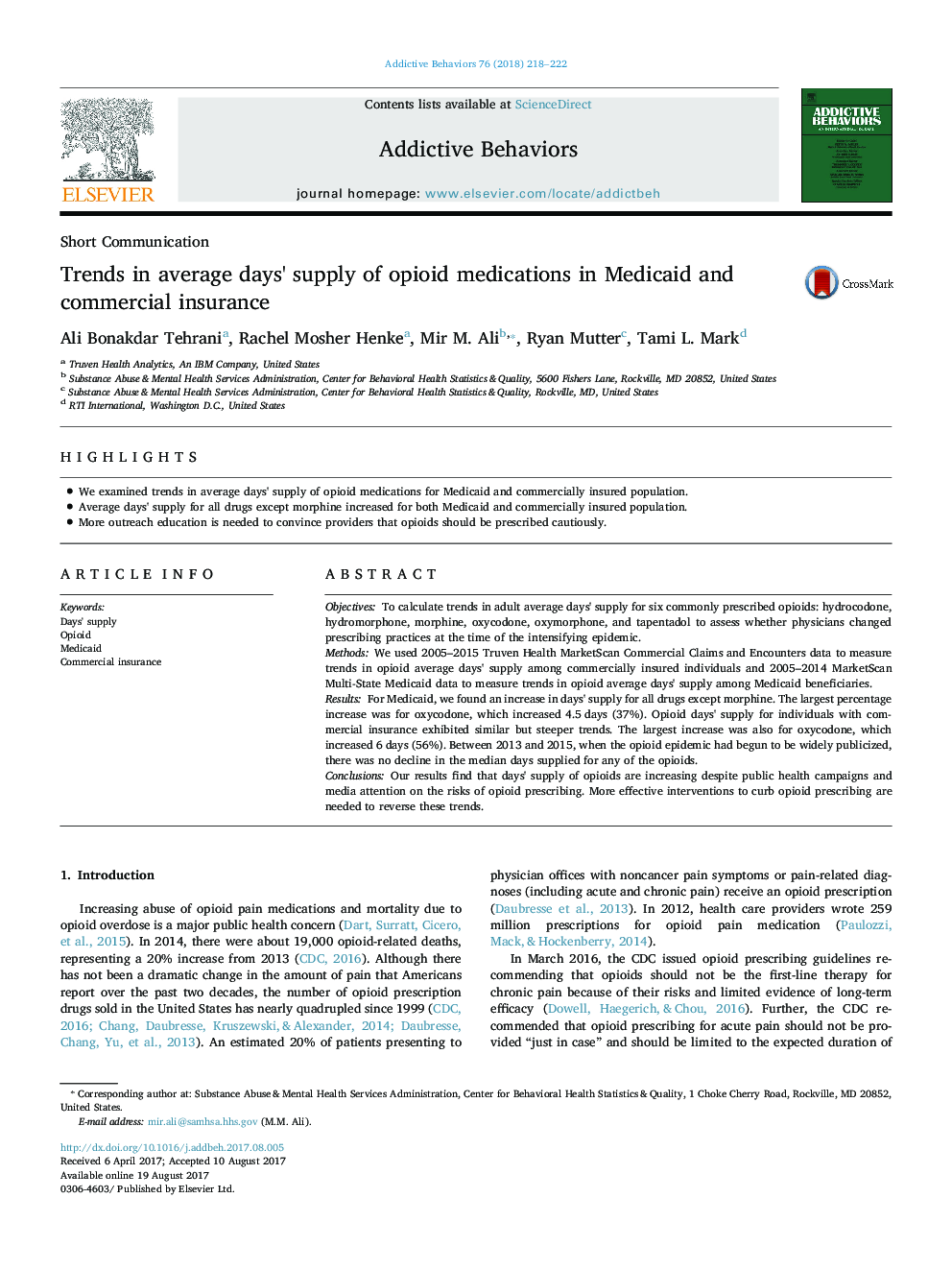| Article ID | Journal | Published Year | Pages | File Type |
|---|---|---|---|---|
| 5037654 | Addictive Behaviors | 2018 | 5 Pages |
â¢We examined trends in average days' supply of opioid medications for Medicaid and commercially insured population.â¢Average days' supply for all drugs except morphine increased for both Medicaid and commercially insured population.â¢More outreach education is needed to convince providers that opioids should be prescribed cautiously.
ObjectivesTo calculate trends in adult average days' supply for six commonly prescribed opioids: hydrocodone, hydromorphone, morphine, oxycodone, oxymorphone, and tapentadol to assess whether physicians changed prescribing practices at the time of the intensifying epidemic.MethodsWe used 2005-2015 Truven Health MarketScan Commercial Claims and Encounters data to measure trends in opioid average days' supply among commercially insured individuals and 2005-2014 MarketScan Multi-State Medicaid data to measure trends in opioid average days' supply among Medicaid beneficiaries.ResultsFor Medicaid, we found an increase in days' supply for all drugs except morphine. The largest percentage increase was for oxycodone, which increased 4.5Â days (37%). Opioid days' supply for individuals with commercial insurance exhibited similar but steeper trends. The largest increase was also for oxycodone, which increased 6Â days (56%). Between 2013 and 2015, when the opioid epidemic had begun to be widely publicized, there was no decline in the median days supplied for any of the opioids.ConclusionsOur results find that days' supply of opioids are increasing despite public health campaigns and media attention on the risks of opioid prescribing. More effective interventions to curb opioid prescribing are needed to reverse these trends.
